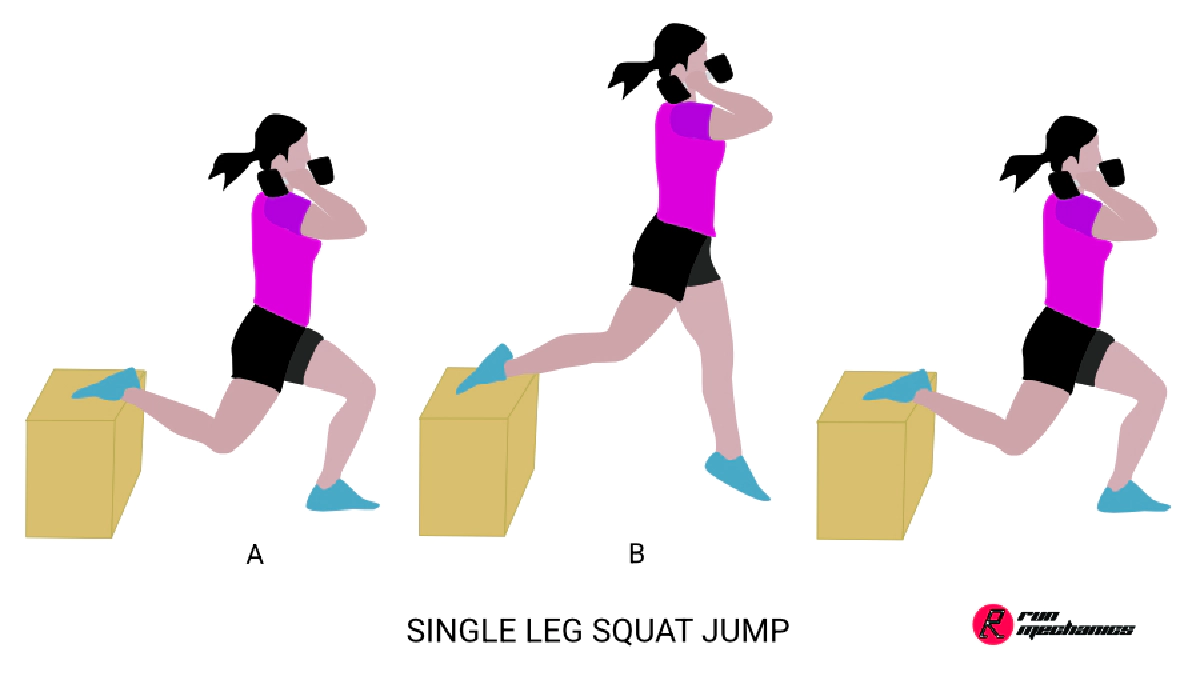
At RunMechanics, shock at impact is one of the most frequently occurring imbalances that we see. Shock at impact can go up to 2-5 times the bodyweight depending on the runner’s technique and the ability to engage the core. Plyometrics drills, especially Single-leg squat Jump is an excellent workout to improve the ability of a runner to improve the ability to reduce the shock.
It is also quite common for runners to have imbalances between the left and right sides of the body. These imbalances can put undue stress on one side of the body leading to inefficient stride and can lead to injury. Observing the running dynamics such as shock between left and right is a good way to understand the severity of such imbalances. Since Single-Leg Squat Jump is a unilateral workout and is performed on one side at a time, it is a very effective way to reduce imbalances.
This workout requires a bench that is knee height or more. You can optionally consider using dumbbells for this workout.
You can include this as part of your strength training to help with better extension, better balance, and improve your ability to control the shock. 3 sets of 10-15 repetitions on each side of the body is a good start point.